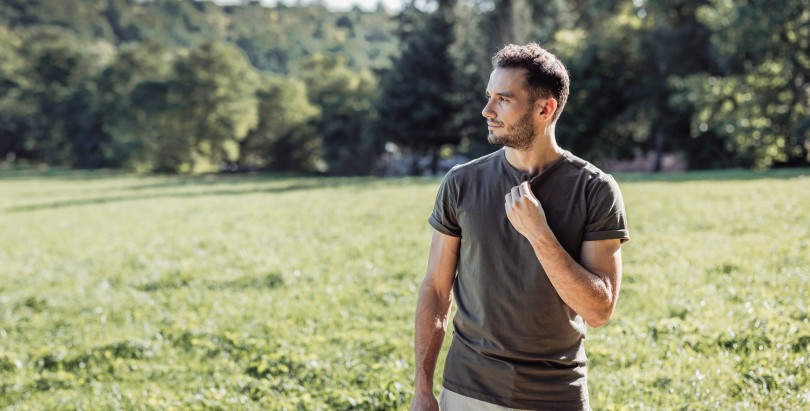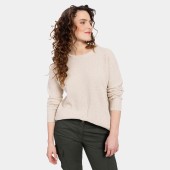Introduction to BUSHMAN clothing care
May 3, 2024
Why do my clothes wrinkle? Why isn't the colour what it used to be? Are these questions familiar to you? Check out our series on materials and proper care! Cotton and other natural fibres just aren’t polyester. And there's no such thing as care! Learn our tips on how to take care of BUSHMAN clothing!

Period of change
The textile industry is constantly changing, not only due to the natural need to "waste not", but also due to the context of undeniable climate impacts.Raw material is transformed into the final product. This entails a change in the quality of the soil, the air and, ultimately, the time given to plants and animals to grow in the first place. The technical methods and ways of processing, working and transforming it into a substance of the quality, flavour, strength and design that the brand presents have also shifted and are constantly changing.
 It is a relatively complex and intertwined technical field, which in the last decades has had substantial investment, but at the same time less in the search for new or for the application of already found necessary technologies and production lines. Often an innovative textile technological solution is logically quite clear and desirable, but at the same time financially unattainable for a large number of manufacturers. Companies simply cannot immediately switch to new technologies and replace those that are still functional. Certification, the actual laboratory testing of the resistance of materials, is still somewhat in the background, but the future lies in this change of thinking. It is an extremely important value to offer only what is at least standard in the textile sector. And the more that standard rises, the better.
It is a relatively complex and intertwined technical field, which in the last decades has had substantial investment, but at the same time less in the search for new or for the application of already found necessary technologies and production lines. Often an innovative textile technological solution is logically quite clear and desirable, but at the same time financially unattainable for a large number of manufacturers. Companies simply cannot immediately switch to new technologies and replace those that are still functional. Certification, the actual laboratory testing of the resistance of materials, is still somewhat in the background, but the future lies in this change of thinking. It is an extremely important value to offer only what is at least standard in the textile sector. And the more that standard rises, the better.
BUSHMAN durability and fibre naturalness
It is, and always has been, important to us to design products that are durable, comfortable and whose value lies in the customer's confidence in the product. To be able to rely on something that will feel good - it is this emotion, associated with the product and therefore the brand, that is essential.We won't change the natural properties of fibres - whether it's in cotton or fibres from new collections (e.g. bamboo viscose, modal, lyocell or linen). It is essential to understand that each material has its natural limits, which even the best designer and technologist cannot move, just as each individual fibre has undeniable advantages and differences compared to other fibres...

Cotton, for example, has always been used more in lighter tones, precisely because it does not have such good properties in darker shades - the sun makes it shine, it gets spots or it stains... Similarly, prolonged exposure of the material to aggressive sweat in combination with the sun's rays has a similar effect.
We can push the limits of materials a little further with the help of modern ways, but for some - natural ones especially - the best way is to respect them and to try to work with them to our advantage. After all, a product's lifecycle does not begin and end with the design and manufacture of the product. It requires the interplay of production, supply and use.
- At the very beginning is sustainable design, i.e. product design, which is not just about shape, colour and branding, but also includes a whole range of questions that need to be answered; questions about the sustainability of the textile material, about the surface treatment of the material for a soft feel, about increasing warmth. At the same time, it is essential to maintain a balance in the technologies used, natural resources and meeting the needs of the customer.

- The finished product reaches the customer's home - but even there its journey doesn't end. It is only at this point that its story begins. Bushmen have enormous power to change the cards they are dealt. It is largely up to them what the collections will look like, what direction we will move in. Discussion is extremely important, it is a continuous learning process from both sides - we listen to feedback and, in turn, appreciate the Bushmen when they can actively look after their wardrobe. That they know exactly why they buy Bushman, what they can expect from the products, how each material reacts... By thinking in this way, they are promoting sustainability and consideration for themselves and the planet, and in doing so we are also helping to extend the life cycle of the product to the maximum possible.
- • At the end of the journey there is suitable disposal. In the best case, the end-of-life clothing from the textile container is taken to a sorting line and sent for recycling, for unravelling. This material is then used secondarily for a new product. Amazing, don't you think?!
















